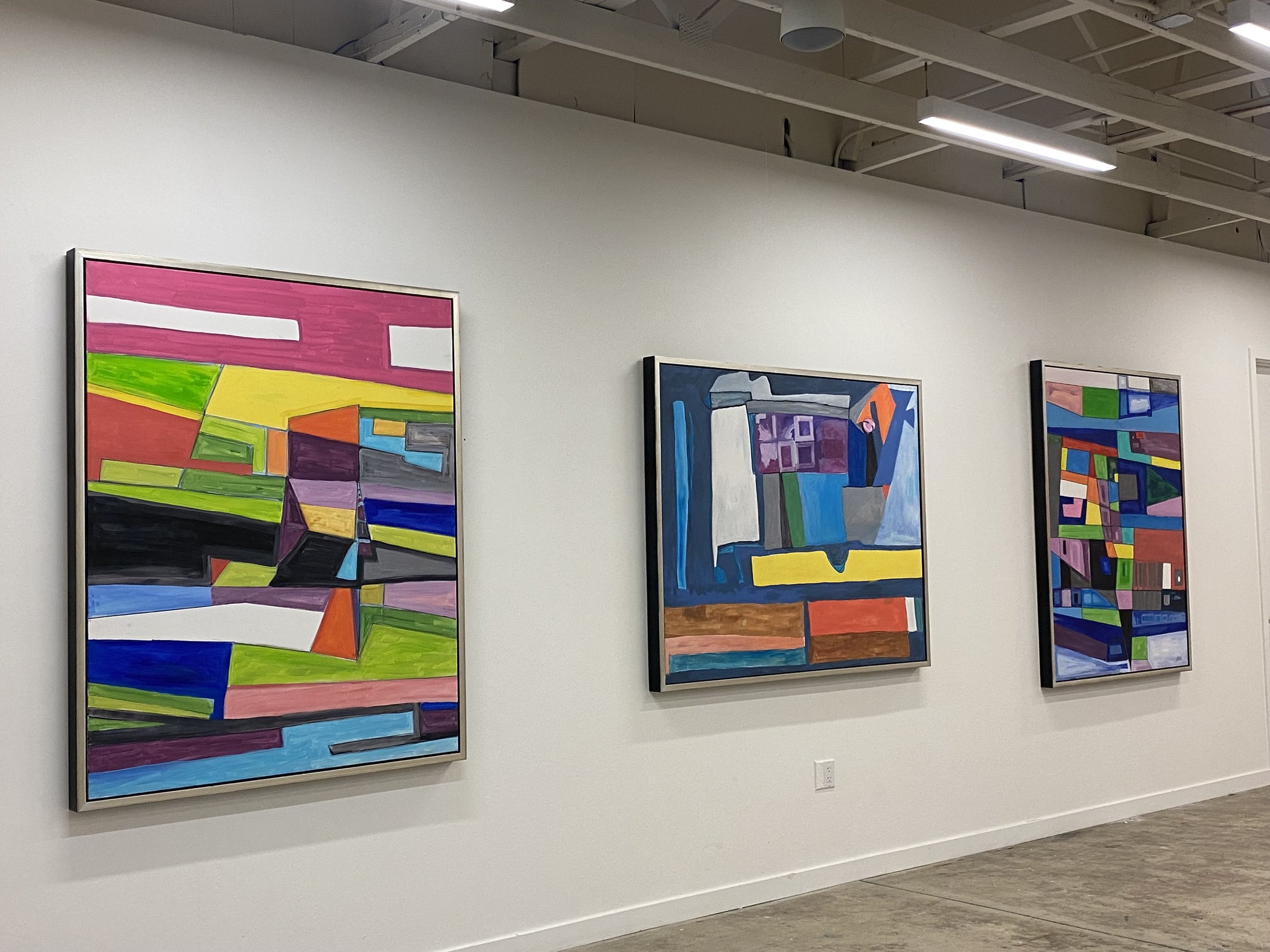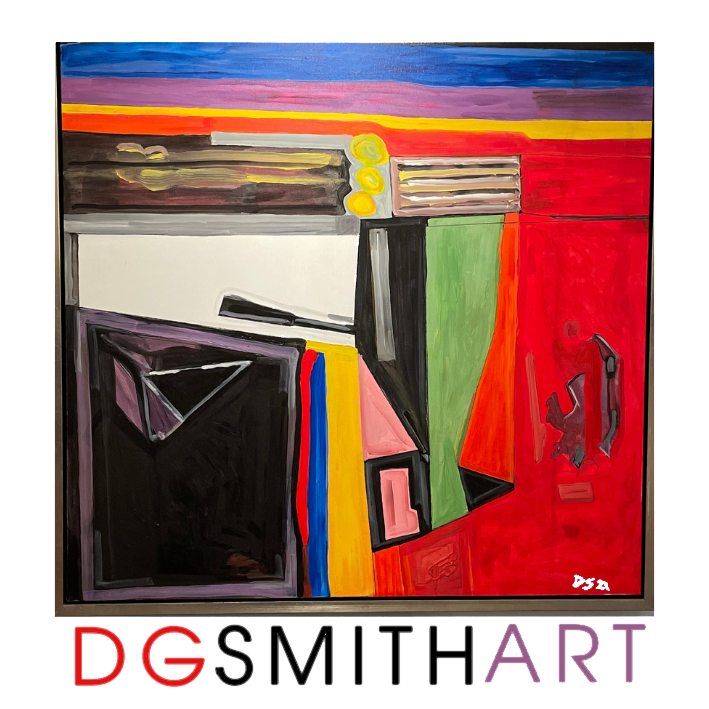Artist Medium
Childhood doodles and early ink sketches progressed to experimentation with acrylic and interior house paint. Each artistic medium pushed him forward in his artistic expression.
I use acrylic paint for a few reasons. One of the biggest is the amount of time I was spending to use oils. I was taking as much time cleaning up as I was putting the paint on the canvas. You can clean acrylic with soap and water which is a lot easier than dealing with kerosene.
However, a primary handicap was the fast-drying time, which is part of a desirable feature to minimize clean up and be able to stack paintings on top of each other without smudging the work (and getting paint all over your car). Also, I found the toothpaste type viscosity of acrylic paint in larger tubes to be hard to mix and brush. And what I spent on paint was off the charts. It’s quite expensive, gooey to work with, hard to mix with unforgiving fast drying time.
In some of the painting classes I attended there was an emphasis on mixing the primary colors to arrive at the desired colors of a composition. As I started using larger canvases, it became increasingly difficult to estimate the amounts of the primary color mixes to arrive at the desired quantity of a particular color. Plus the paint would dry up before on could get it on the canvas. I frequently had way too much or way too little. I felt like I was spending more time trying to mix colors than applying the right color paint to the canvas. Back to the viscosity thing: the tubed paints were just too sticky. They didn’t glide on the way oil does. This led me to search for other sources of paint that would be easier to use an more cost effective.
I discovered the paint store, you know the one that sells house paint and their customers are house painters and not artists. What I discovered is that there is a big difference in house paint. A primary problem I experienced early was a skin that formed over the top of the paint in the sample jar that sat for a few days. . Another feature about housepaint I discovered is that the exterior paint of some brands contains UV light protection ingredients that fights light damage. Having UV light protection is a big deal to dealers and museums. Here’s the thing about exterior house paint that I really like. It goes on like oil and does not dry as quickly as tube acrylic paint. It’s smooth and not sticky. The brand I use has excellent coverage characteristics, so it is quite forgiving. The white will cover black in one application. Now here is one of my favorite things about using house paint.
The selection of colors is practically endless. You go up to a wall and look at a broad spectrum of colors and you can pull the sample cards to cross reference the colors you are trying to achieve in your composition. Now here is the kicker; a sample size of custom color mixed paint in a twist top jar is about five bucks and they mix it while you wait, It’s real bargain and you don’t have to carry a large inventory of paint. I’m not embarrassed about using it. Although I do not t want to divulge the exact brand I use because it took me a while to find what worked best for me.
There might be other brands I haven’t experimented with that are better for each artist. One of my favorite compliments (from my wife) who said I wasn’t as much an artist as I was a colorist because my paint colors are so vivid and bold on the canvas. That’s way more important than where you sourced your paint.
“David G. Smith
My hope is that the dance of light and color in my paintings allows the viewer to see beyond just looking.”



